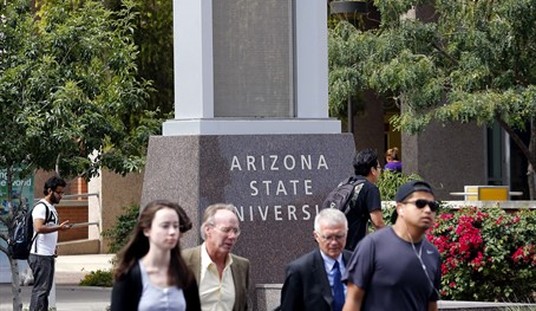Back on July 1st, the Ex-Im Bank began its long-delayed wind down. Commentators have variously decried that its demise will stifle the ability of small business to compete on the global market, while on the flip side of the coin, others state—correctly—that the federal credit agency subsidizes only a tiny sliver of total exports annually. So, what does the market landscape look like without Ex-Im?
For one, ending the Ex-Im Bank is just one small rollback of the same sort of misguided policies that led the Obama administration to pick “winners and losers” in the energy market in 2011. While Solyndra was helping itself to $535 million worth of taxpayer-backed loan guarantees, it was also facing significant financial difficulties that threatened long-term solvency. When Solyndra eventually met a fiery end, taxpayers were left with a half-billion hole in their wallets.
Ex-Im operated much the same way. Supporters of the bank have stated that the agency is a windfall for taxpayers to the tune of $14 billion, however, the fuzzy accounting methods the bank uses doesn’t take the risk of default into account. If a “fair value” approach were applied that accounts for default risk, Ex-Im actually costs taxpayers $200 million a year. As such, a market without Ex-Im is one in which taxpayers don’t finance foreign businesses who can saddle them with the tab if they can’t meet their obligations.
Ex-Im Bank’s artificial distortions in the market also gave foreign firms a leg up over American businesses. Such was the case of Air India, who with $3.4 billion in Ex-Im financing was able to secure the purchase of 27 Boeing aircraft at loan rates that American carriers aren’t privy to. As a result, Air India will realize a cost advantage over other carriers of approximately $2 million per aircraft, creating a tilted playing field that crowds out airlines such as Delta, who are trying to expand their footprint in a growing East Asian market, sans taxpayer subsidies.
Recommended
Other examples abound. Recently, two senators from Michigan—one has since left office—penned a letter to the president of the Ex-Im Bank expressing concern over the agency’s $694 million loan approval to a company seeking to produce an open-air iron ore mine in Australia—owned by the country’s richest woman.
The approval came despite warnings that the loan would cause a glut in global supply of iron ore—a market that’s already saturated with it. This, in turn, the senators argued, would “substantially injure American iron ore and steel producers and their employees that are competing in the same global marketplace.” Pushback against Ex-Im generally comes from the right, but a threat to jobs at home from foreign competitors is still a bipartisan concern.
Eliminating Ex-Im removes these distortions, allowing American companies to be more competitive, especially in a labor market that’s been shifting overseas, as onerous taxation and regulation makes maintaining jobs here less attractive.
Proponents of the bank, such as the U.S. Chamber of Commerce, rationalize its existence largely by extolling the aid small businesses receive through its operation. However, such focus betrays the extent to which Ex-Im actually played in total U.S. export business every year.
Of the roughly $2.2 trillion in annual U.S. exports, ninety-eight percent wasn’t financed through the Ex-Im Bank at all, but rather by private means. According to the Mercatus Center, of the remaining two percent that was, only 1.7% of the largest loan guarantees made in 2013 went to various “small businesses,” with the lion’s share going to multinational corporations like Boeing, Caterpillar, and GE. These giant concerns hardly need public assistance. While there are indeed smaller businesses receiving subsidies, does such a miniscule share of the total export pie every year justify a federal agency using taxpayer funding to accomplish what private financing is already doing?
Businesses don’t need a federal credit agency to produce goods, receive lines of credit, or flourish in general. As Bill Peacock, Vice President of Research at the Texas Public Policy Foundation, recently stated in The Hill, a far better approach for the U.S. market than subsidized export financing would be to draw on economic lessons from states such as Texas, by seeking “lower taxes, less regulation, fewer lawsuits, and reduced reliance on the federal government.” This approach, as Peacock explains, has allowed Texas to create 1.1 million jobs and maintain a lower unemployment rate than the national average in the last six years.
Given the Senate vote in late July to resurrect the bank by tying it to must-pass legislation—in this case, the highway bill—there is a possibility that taxpayers may once again play party to Ex-Im’s corporate welfare. Congress should abandon this attempt. Businesses shouldn’t use taxpayers as a piggybank; rather, businesses should operate on the free market, as they always should have been.

























Join the conversation as a VIP Member